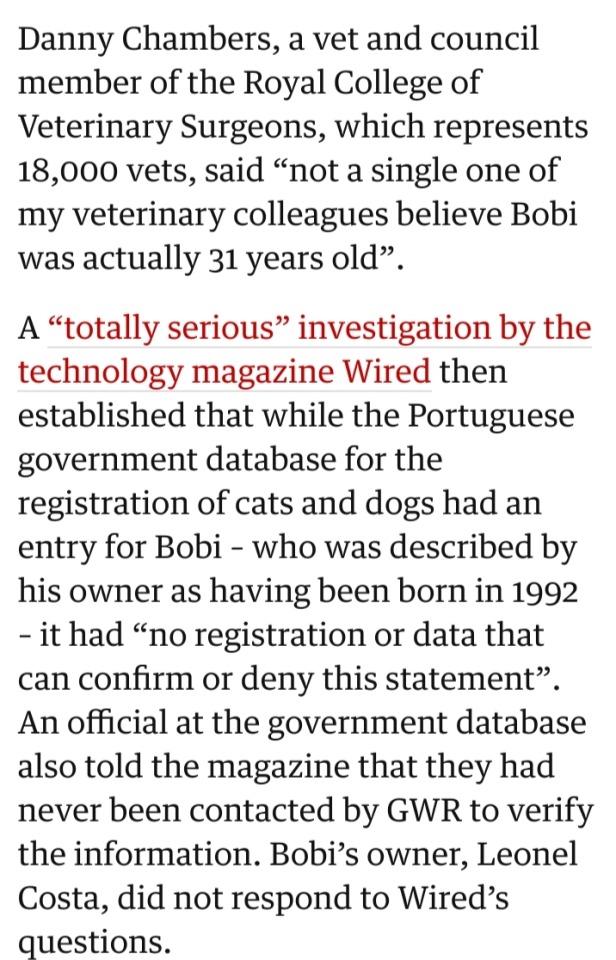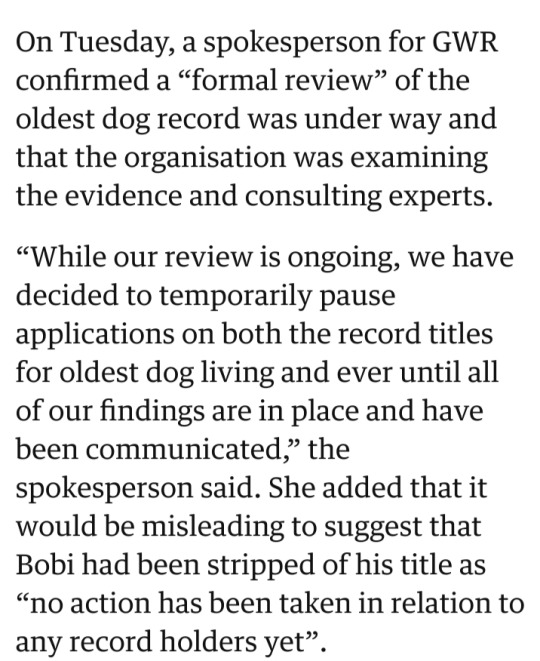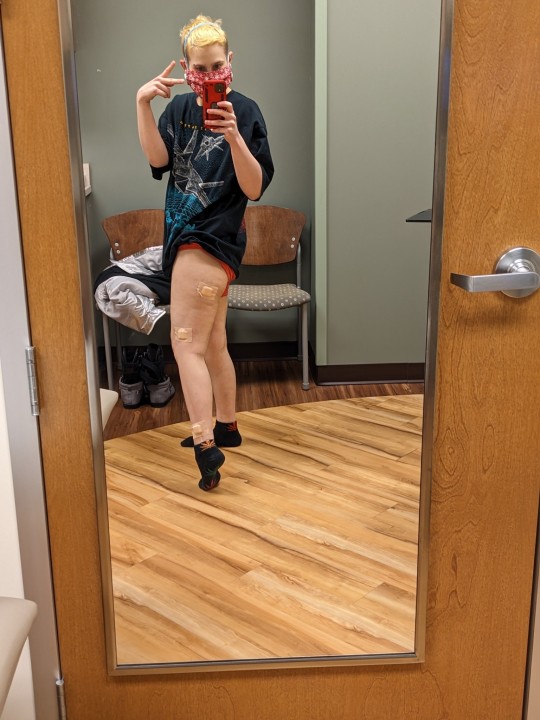#genetic testing
Explore tagged Tumblr posts
Text
African populations today harbor more genetic diversity than any other population in the world, and the genetic diversity found in non-Africans represents only a subset of that found in Africa.
The claim has even been made that East Africans are more genetically different from West Africans than Europeans are from Asians. That diversity has fit well with the fossil evidence that the human species originated in Africa. It is well established that when a new species, be it plant or animal, arises and spreads, genetic differences accumulate more in geographic regions where the species has been present longer. The more distant populations represent only a small subset of the genetic variation that arose nearer the center of origin.
Some of the genetic variants the researchers identified, coding for both light and dark skin pigmentation, were quite ancient, between 300,000 and 1 million years old, meaning that skin color variation seems to have been present since before the emergence of Homo sapiens.

Tishkoff noted that the work underscores the diversity of African populations and the lack of support for biological notions of race.
WE ARE NOT BLACKS WE ARE AFRICANS WE LITERALLY DEFINE DIVERSITY
“Many of the genes and new genetic variants we identified to be associated with skin color may never have been found outside of Africa because they are not as highly variable,” Tishkoff says. “There is so much diversity in Africa that’s not often appreciated. There’s no such thing as an African race. We show that skin color is extremely variable on the African continent, and that it is still evolving.”

#neil#african#afrakan#kemetic dreams#brownskin#afrakans#africans#brown skin#african culture#afrakan spirituality#afrakan woman#deep reddish brown skin#tupac#epic video#kemet#africa#joe rogan#genetic diversity#genetic#genetic testing#ethiopian#yoruba#asian#neil degrasse tyson#aliens#aliens built the pyramids#ancient astronauts#ancient history#ancient astronaut#ancient civilizations
390 notes
·
View notes
Text
alright this one might get me in some online fights here on tumblr but i feel like *someones* gotta bring it up
aborting a fetus with a genetic or mental disorder because you cannot take care of them is not eugenics.
bringing a fetus into the world when you can not care for their disorders is cruel.
if you can not care for a kid, you shouldn't have it. yes, that includes kids with autism, kids with down syndrome, kids with cystic fibrosis, etc. its not eugenics, its wanting the best for yourself and any kid you bring into the world.
its not bad to abort a fetus you can not care for. its bad when you know you cant take care of that child but have it anyway.
genetic testing doesnt necessarily promote eugenics, it allows parents to make educated choices about their family and the children they are bringing into the world. frankly, i think it makes the lives of disabled people better.
if you could make sure your child doesnt suffer from a chronic disability, wouldnt you do it? i dont think thats a bad thing.
#recently did a report on developing prenatal screening for schizophrenia#got asked if i was prepared for my research to support eugenics#and i have a *lot* of feelings about that#but long story short this post#genetic testing isnt eugenics#abortion#reproductive rights#reproductive health#family planning#genetics#genetic testing#autism#autism spectrum disorder#cystic fibrosis#down syndrome#disability#eugenics#medicine#healthcare#mental health issues#schizophrenia#im open to genuine discussions about this if u wanna dm me#but if youre just gonna call me an idiot and a horrible person please go elsewhere
16 notes
·
View notes
Text
Got me generic screening back and if the 176 gene mutations they screened me for, I only tested positive as a carrier for 1, which is really nice. I was worried that there were punnett squares in my near future 😬😬
9 notes
·
View notes
Text
While the company’s privacy policies claim to prioritize customer consent, a sale could result in a new owner with different priorities...
3 notes
·
View notes
Text
Hackers Selling Stolen Customer DNA Data From 23AndMe, Company Faces Class Action Lawsuit

Oct. 9, 2023
Biotech company 23andMe Inc. allegedly failed to protect the genetic information of thousands of people that was exposed in a data breach announced Oct. 6, a proposed federal class action said.
Monica Santana and Paula Kleynburd alleged that 23andMe, a provider of genetic testing services, maintained their personal information in a reckless manner and failed to use reasonable and adequate measures to keep their data safe.
Information exposed in the breach included names, sex, date of birth, genetic ancestry results, profile photos, and geographical location, according to a complaint filed Monday in the US District Court for the Northern District of California.
Some of the information has appeared for sale online, including that of prominent figures such as Mark Zuckerberg, Elon Musk and Sergey Brin, according to a press account cited in the lawsuit.
The company also failed to provide prompt and adequate notice of the incident, the complaint said. 23andMe didn’t respond immediately to a Bloomberg Law request for comment.
Read more
See 🤷🏽♀️. Willingly giving up your DNA to a genetic testing company that's a test done for entertainment purposes for what? Didn't this happen before or was that GedMatch. It doesn't mention it in this article, but the one I read about a week ago stated that the 23andMe hackers were going after data for those showing results for Ashkenazi and Chinese descent. The timing is rather...interesting.
I was waiting for this shit to hit the fan. 23andMe was tryna be subtle about the whole thing. "When asked about the post, the company initially denied that the information was legitimate, calling it a 'misleading claim.'"
Whole time:

Now the shit going to the highest bidders. Chile.
7 notes
·
View notes
Text
Bug gets an hEDS diagnosis
So it's been a minute since I've talked about ongoing health stuff, but I learned some new things this week and I'm posting because it's possible this will help somebody else on the path of "I think I have EDS, what do I do about it?" Throwing this under a read more because it's probably going to be pretty long.
For clarity, I'm located in the US, so depending on where you are, your version of this process may be different. Also, obviously, none of this is meant as medical advice because I am not a doctor, this is just a rough retelling of what I've experienced because it is a long, frustrating process, and when I started I had no idea what I was getting into. It would have helped me a lot to read a personal account of what it's like to go through this, and I hope this can help someone else in the same position maybe.
Also, if this is you, don't give up. It is long and frustrating and hard, and not always easily accessible, but if you can, I have found it worth pursuing the diagnosis. I have so many more options to help me now than I did when I started.
So: after a year and a half of constant doctors appointments and tests and various kinds of therapy and other nightmares, I've finally got an actual official diagnosis. Like I (and several doctors) thought from the beginning, I have Ehlers-Danlos Syndrome, type 3 aka hypermobile Ehlers-Danlos aka hEDS. There are 13 subtypes of EDS that affect different types of connective tissue; type 3 is the most common, but is also the one type we do not know the gene for yet. (Although there is promising research happening currently and we might find the gene!)
The first step was explaining to my primary doctor the kind of issues that I have and just flat out stating that I've read about EDS, and it sounds absolutely strikingly like my lived experience. I emphasized that my joint pain and dislocations were impacting my quality of life and ability to work. She agreed, and referred me out to two other specialists: a physical medicine doctor, and a geneticist.
It then took about six months to get in to see the physical medicine doc, because every specialist under the sun is booked out until forever. You may have better or worse luck with this, but from what I've heard, wait times are awful everywhere. I was also sent for an echocardiogram, which is where they smear goop on your chest like an ultrasound and look at the size and shape of your heart. EDS can cause your heart tissue to stretch and potentially tear, which is bad for obvious reasons.
This doc (lucky for me) had a bunch of previous patients with EDS, and has slowly grown to pick up more over the years, which was really good news because it was easy to show and explain my problems. They set me up with physical therapy, some meds to try for the pain, referrals to a cardiologist, and sent a note to genetics to try and help expedite that process. (Spoiler: it did not help.)
At this point I should drop in this link, because there are a heap of good resources here that helped me a lot:
This person made several documents you can fill in the blanks on with your own information, which helps a) you understand what EDS is, b) explain EDS to doctors who don't know anything about it (more common than you'd think) and c) organize all the relevant information you need for appointments, bringing it up with your primary, and so forth. I discovered this a bit into my journey and it was so helpful.
Additionally, the EDS Society has a lot of information and printable stuff for taking to your doctor or other people who might need education.
Okay, link tangent over.
I spent the time from December 2021 through maybe May or June of 2022 in PT, which didn't go well because my health has deteriorated pretty badly. My joint pain was severe and out of control, and I dislocated my shoulder 3 times in PT. I also learned from a cardiologist during this time that I also have POTS syndrome, which tends to be comorbid with EDS. Basically: I stand up, all my blood goes to my feet, I get dizzy and have no stamina for walking any kind of distance. This, also, made PT very difficult because I had a really hard time doing any of the exercises without feeling like I was going to collapse. But PT is the standard treatment for EDS to strengthen the muscles around your joints so the work is distributed between them better and the pain is less over time. I'm hoping to get back to this.
So: if you're going through the diagnosis process, you might have to do PT for a while, and probably see a cardiologist.
Finally, after originally seeing my primary and getting a referral to genetics in spring of 2021, I got to see a geneticist in fall of 2023. It turns out that this is because there is only one geneticist in my state who deals with EDS, so the wait times are accordingly long. But: it was worth the wait. We tested for a whole spectrum of connective tissue disorders, to rule everything out, and I got so much information.
If you are waiting on a genetics appointment, it's worthwhile to use that time to try and gather as much family history as you can. Anything unusual neurologically, heart-wise, etc., among your siblings, parents, grandparents, if you can get that information. Even if you can't, they will still be able to help you. But it's very useful to have. It's also helpful to have a timeline for yourself: when did you start noticing your symptoms? Did you have any weird injuries? Were you weirdly flexible as a kid? Stuff like that.
Understandably, some people have different feelings on genetic testing, and it's all valid. For me, I just wanted an answer, because basically every doctor throughout my childhood and younger adulthood dismissed me when I brought up stuff that ended up being signs of EDS. I felt really vindicated by getting an answer, even if that answer means I have a lifelong illness. It just means I now have a toolkit to help it and work around it.
So, between meeting with genetics for the first time, and getting the test several weeks later, waiting for results, and finally making an appointment for a final diagnosis, took about 6 months. A lot of this was due to scheduling (again) and insurance causing a fuss because they do not like to pay for genetic testing.
Anyway, as I mentioned earlier, hEDS can't be tested for genetically (yet) but is also the most common type. So how do they diagnose it? You need a qualified geneticist to rule out other illnesses, and then they visually do some tests and ask a lot of questions. (The technical term is "clinical diagnosis.") You'll have to do something called a Beighton scale, which is a series of tests of flexibility on your thumbs, fingers, elbows, knees, and other joints. It's not difficult, and you can stop if your joints are in pain. (I also found that basically every doctor and physical therapist I saw through the year wanted me to do parts of this test for them, and they all said "yep, you're probably getting that diagnosis." So I guess I should have been more prepared to perform on command, or something.) Between my Beighton score, family history, and personal history, my geneticist determined that I fit the diagnosis to a T.
Really, this last genetics appointment was like sitting and listening to someone narrate the details of my entire life to me. So many little things I hadn't even mentioned in previous appointments came up, and I have so much more understanding of why my body is how it is. They confirmed that one of the best pain relief methods for EDS patients is cannabis, which I've been using for a month and change, and has truly made a difference in how functional I can be. I now have more ideas on what I can do to help reduce the pain I'm feeling through physical activity and other means, and diet, and so on. It will never be 100% better, and I can accept that. I can work with this.
So, essentially, it's an endurance game. I was frustrated, in pain, tired, and overwhelmed for the better part of a year. I cried a lot. I felt like no one would help me, but what I really needed was answers and information. I'm lucky to have family support cheering me on through the process, because more than once I just wanted to give up and never see another doctor again. But, knowing what I do now, I have the information I need to improve my life, and that is a lot.
It can be hard and scary and really, really frustrating, but don't give up. Your life can get better. You just have to be persistent, and if you've made it this far with pain and joints like these, you already have the persistence to do it. 💖
If this has helped you at all, and you want to help me out in return, I have a ko-fi page for tips and shop, but please take care of yourself first!
#blog#healthposting#medical#cw medical#tw medical#heds#hypermobility#ehlers danlos syndrome#eds diagnosis#genetic testing
4 notes
·
View notes
Text







NOTE:
“While our review is ongoing, we have decided to temporarily pause applications on both the record titles for oldest dog living and ever until all of our findings are in place and have been communicated,” the spokespersonn said.
She added that it would be misleading to suggest that Bobi had been stripped of his title as “no action has been taken in relation to any record holders yet.”
#Bobi#Portuguese mastiff#Guinness World Records#Royal College of Veterinary Surgeons#genetic testing#Leonel Costa#Portugal#oldest dog record#national pet database
2 notes
·
View notes
Text
I 👏 WAS 👏 RIGHT 👏 😤
got some genetic results back and they CONFIRMED so many suspected problems INCLUDING the BH4 deficiency I proposed to my doctor at the beginning of this year. I WAS RIGHT!!! ON ALL ACCOUNTS!!!!!
interestingly im not taking the right kind of b12 (yet again) so here's to attempt #3!
luckily i was only homozygous for one mutation and everything else is heterozygous so I've got some function!!
Need to figure out how to get N-Acetyl-Cystein in the mix without blocking/using up all the DAO enzyme I have bc it hurts my joints 😩
5 notes
·
View notes
Text
3 more weeks until I find out if I have small fiber neuropathy, 2 until my tilt table, and just after that is a 3 week long heart monitor and genetic testing for my ehlers danlos syndrome. With my personal and family history of heart problems is giving major classical/vascular vibes. It's all being done at Loyola which isn't my usual place so that's kinda fun. It's a bit of a hike though so I hope it's not the new normal.


#pots#postural orthostatic tachycardia syndrome#orthostatic hypotension#ehlers danlos syndrome#genetic testing#small fiber neuropathy#hypermobile ehlers danlos#ceds#heds#veds
8 notes
·
View notes
Text
Seeds of Salvation and Heresy
3 Intersections of technology and culture within the Human Imperium:
Newspapers
Occasionally the Adeptus Mechanicus will give large, easy-to-use, industrial paper printers to Ecclesiarchy cults and Administratum bureaus. The cults use the printers to make pamphlets promoting their faith. The bureaus use the machines to generate large quantities of printed records that get sealed up in a vault where they are rarely consulted. When the cults and bureaus collapse due to internal corruption or incompetent leadership, the mechanicus isn’t eager to reclaim the printers. The tech-priests rely on the noosphere, hardline data-cables, and vox transmissions to share information, so print media is beneath them. Thus the printers are sold off on the open market and purchased by aspiring publishers. This is how most newspapers within the Imperium start.
Reporters will cover the news in the local area, with an emphasis on whatever is important to locals and reinforces the legitimacy of Imperial authority. By catering to those two interests, the paper will avoid censure and acquire a large subscription base. Newspapers supported by aristocracy have the false freedom to question those in positions of power without severe repercussion, as long as the target isn’t their own patron. When reporters are attached to Imperial Guard regiments in a battlefield, they will be closely supervised by members of the Commissariat.
Desperate journalists with connections to warp dabblers might seek aid from Slaanesh or Tzeentch. The Dark Prince can give one the charisma and reputation to interview any subject they desire. And the Changer of Ways can give an investigator the inside scoop on anything or anyone in the past present or future. By invoking the warp, these investigators make themselves a target for the Ordo Malleus and other Ruinous Powers.
Blood Ballots
On planets where imperial society is too young to have an established hereditary ruling class, democracy is implemented. These elections, run by the Adeptus Arbites and Administratum, are loaded with faux candidates and propositions to bait insurrectionists into exposing themselves. A citizen of the imperium has nothing to fear as long as they vote correctly with their signed ballot. When the society gets old enough it will usually abandon the voting process and governance will flow along lines of succession. But some societies don’t do that and instead scale the process up with help from the Mechanicus. This aid comes in the form of cogitators and other mass survey-taking devices. When the Biologis branch of the Mechanicus get involved, that is when blood-ballots start being used.
Obviously, the blood ballot requires the voter to prick their finger and mark their votes with their own blood. Afterwards the voter gets an “I voted!” bandage wrap. The ballot is then sent off to a tallying station to be counted. And after that, Tech-priests take the blood stained pieces of paper and run them through genetic screening devices. This is how the Mechanicus, and the other authorities they communicate with, are able to detect disturbing genetic trends in the general populace. Mutant uprisings, psyker flare-ups, and xenos corruption can all be anticipated and pre-emptively crushed before they threaten society. Thus blood ballots are high priority targets for those same subversives who wish to remain hidden. Chaos blood sorcerers will also seek these ballots to use in their dark rituals. Given all this it’s no wonder that the Mechanicus will deploy heavily armed forces to defend blood ballot collection centers.
Isoburbs
A hab-block is a cubic housing unit containing a kitchen (ration storage), bathroom (low flow toilet and shower), bedroom (bunkbeds), and living room (byo/dyi furniture). They are produced by an STC and slot together to form unending apartment rows in hive cities.
In an Isoburb, the hab-block serves as the core for a single family-of-five residence. Each block is placed equidistant from each other along paved roads and cul-de-sacs. Homeowners build onto the block and expand their homes using available construction materials. Typical additions are a garage and a second floor accessible by a staircase. More eccentric individuals could add other features such as perimeter fencing, a third floor, pool, garden, and more. These expansions are regulated by ad-hoc governing bodies known as Homeowners Associations.
Isoburbs are typically found on frontier and garden worlds. This housing arrangement is used for workers at information/tactically sensitive facilities: Astropathic relays, archeological archives, anti-orbital weapons platforms, and outer void detection towers. Thanks to the isoburbs layout, workers cannot easily spread diseases, dangerous ideas, or unauthorized information beyond their shift-mates and immediate family. Some spaces are set aside for public (schools, parks) and commercial use (shopping, restaraunts), access to them can be restricted for the same reasons listed previously. This isolation focused design has been documented to have a detrimental effect on residents psyches but the trade off is considered acceptable.
The roads connecting the housing developments to a facility are designed to be labyrinthine to limit civilian riots and impede an invading ground-based army. Soldiers have to deal with long wide-open roads while on foot or in light vehicles. They must also prepare for close quarters combat while clearing out every individual residence along those roads. These problems almost disappear if an army is using heavy, super-heavy, or flying vehicles. The former can simply drive over structures while the latter can soar above them.
#world building#warhammer 40k#human imperium#dystopia#democracy#journalism#scifi#sci-fi#adeptus mechanicus#adeptus arbites#adeptus administratum#suburbia#genetic testing#adeptus astropathica#dark#urban planning#surveillance#arbitor#warhammer 40000#north american suburb#wh40k#gothic#suburban
18 notes
·
View notes
Text
Watch "The Controversial Future of Genetic Testing" on YouTube
youtube
#genetic testing#health#disability#ableism#science#genetics#healthcare#capitalism#economics#technology#reproduction#eugenics#Youtube
3 notes
·
View notes
Link
Recurring DNA variants in EDS that merit evaluation in COVID19 resistance include those impacting connective tissue elements--51 in COL5 (joint), 29 in COL1/2/9/11 (bone), 13 in COL3 (vessel), and 18 in FBN1 (vessel-heart)--or neural function--93 in mitochondrial DNA, 28 in COL6/12, 16 in SCN9A/10A/11A, 14 in POLG, and 11 in genes associated with porphyria.
Although initial analyses of connective tissue disorders focused on tethering proteins like collagens [1–7], its necessary role in protist to metazoan transitions [14] requires that connecting tissue be medium [15–21] and message [12, 22–28]. The result in complex organisms that combine internal homeostasis with external movement is a diversity of constraining and connecting structures [skin, joint, skeleton—15-21] permeated by wired [nerve 12-13, 22-25], moving [muscle 26-28] and circulating [heart-vessel 7] parts. All of these tissues including many blood components have a common developmental origin [mesoderm, mesenchyme--29] that reflects an evolutionary drive for cell connection.
The inevitable consequence of this integrated anatomy is a reciprocal relationship between the systems that constrain/contain body or blood [20,21] and the nervous system that coordinates their functions [22,23]. Disposition to tissue laxity will not only cause wear-and-tear osteoarthritis and skeletal bends from gravity [deformations like scoliosis, 4-8] but also will provoke adrenergic response to restore cerebral circulation deprived by vessel distensibility and lower body blood pooling [9–12]. Repeated adrenergic stimulation, evident even in those with minimal or benign joint hypermobility [9], produces the brain fog, stress response, and chronic fatigue of postural orthostatic tachycardia syndrome [30–32], the reactive allergic [32–33], immune [23,34], and inflammatory [35] symptoms of mast cell activation [32–33], and, through cholinergic suppression, the irregularity, reflux, and swallowing difficulties of irritable bowel syndrome [36].
Moving beyond the joint hypermobility and skin elasticity emphasized by dermatologists Ehlers and Danlos [11] are S1 Table assessments of neuromuscular symptoms like migraines or poor balance that affect a respective 60% or 61% of EDS females, 96% of all patients having at least one of 12 neuromuscular findings by history. Equally frequent are the brain fog (83%) or chronic fatigue (87%) of postural orthostatic tachycardia syndrome (POTS) in EDS females, the bowel irregularity (82%) or bloating-reflux (79%) of irritable bowel syndrome (IBS), and the rashes (42%) or asthma-dyspnea (49%) of mast cell activation syndrome (MACS) in S1 Table. All but 3 of the 1261 patients had 1 of these dysautonomia findings and the average among females and males of all ages was 12 of the 20 findings.
The neuromuscular and dysautonomia findings are inextricably linked to those of joint-skin-vessel laxity as shown in the Appendix, 483 females over 10.5 years who presented with joint pain having similar numbers of joint 5.8 to 5.1 of 10, skin (2.5 each of 10), or dysautonomia findings (12.2 to 13.1 of 20) as the 358 who presented with postural orthostatic tachycardia syndrome (POTS). Underappreciation of these neuromuscular and autonomic problems and their exclusion from consensus findings [66] is a major reason for the diagnostic delays for males (7 years, 21-14) and females (13 years, 30-17) in Table 1, columns 2-3 rows 4-5)
Flexible glia, dura and vertebrae allow descent of the lower brain to produce Chiari deformation in 14% of women [70] plus back pain from spinal disc herniation or degeneration in 42% [13].
Equally flexible pelvic ligaments (exaggerated in women for parturition) lead to pelvic congestion [71–73] and urogenital problems (menorrhagia—67%, endometriosis—33%) that when counted give women an average 1.5-point excess in total history scores (S2 Table). Inflicting circulatory imbalance is the increased distensibility of vessels that leads to lower body blood pooling (57% of EDS women have foot discoloration upon standing), the reactive adrenergic stimulation producing stress-related psychiatric symptoms [74] that combine with those from pain [75–76] and inflammation [77–78]. Some of these changes including rare joint contractures [79] were undoubtedly related to aging as 74 EDS females and 6 males were over 50 years old.
Comprehensive assessment of dysautonomia findings in EDS [9-10, 30-33] is crucial for diagnosis and for correlating its cardiovascular, immune, and inflammatory changes with the gene changes in S2 and S3 Tables. Holistic ascertainment renders EDS types as subtle variations on a theme or spectrum…
Grouping of genes by impact on peripheral nerve (Np) does seem appropriate since the consistent phenotype of Charcot-Marie-Tooth disease with its classic steppage and foot-drop gait is associated with 7 genes and their 22 variants including LMNA and AARS1 in Fig. 3.
Symptoms common to EDS and long COVID are shown at the top of Fig 5 using the analogy to Tolkien’s Ents: A tissue laxity-dysautonomia entome is imagined with a converging network of contributing genes at the bottom (roots) and a diverging network of symptoms at the top (branching canopy), the two connected through major pathophysiologic mechanisms like articulo-autonomic dysplasia (flowing channels of phloem or sap in the trunk). Peripheral genes with less impact on the central mechanism will have less disruptive variations in affected patients while those like COL3A1(M120180) will act as nodes in these gene networks and cause more numerous and severe symptoms.
The large percentage ranges for symptoms in both patient groups reflects the heterogeneity of patient ascertainment (clinic, online, retrospective in EDS, different hospitalized-outpatient cohorts, post-infection times for COVID19), and the subjective nature of reported findings. All symptoms, ordered by percentage in COVID19 patients, are more frequent in EDS although ranges are a bit more compatible. Symptoms of autonomic imbalance (brain fog, chronic fatigue, asthma-dyspnea, sleep difficulties, and tachycardia) are common in both EDS and long COVID19 (Fig 5), compatible with a prior hypothesis [42]. Asthma is a consequence of mast-cell activation [32–33], the other four of postural orthostatic tachycardia syndrome [30–31, 39].
Less common in long COVID19 than EDS are IBS symptoms and those orthostatic hypotension like syncope and dizziness. Neurologic symptoms like difficulty walking-poor balance, muscle weakness, myalgia, and frequent headaches occur in both as does joint pain that is common in EDS, post-infectious, or autoimmune illnesses (Fig 5).
This clinical genetic study of EDS relates its quantified finding pattern to underlying articulo-autonomic dysplasia mechanisms and the multiple gene variants found by NextGen DNA sequencing. Major results are the connected tissue laxity-neural symptoms of EDS, their relation to disparate nuclear and mitochondrial genes, and the similarities of these relationships to those of acute or long COVID19. The study illustrates the potential strengths and limitations of genomic analysis as summarized below.
Many genes like FLNC in Table 4 are associated with cardiomyopathy and muscle weakness, reflecting overlap of proteins in cardiac, skeletal, and probably intestinal smooth muscle (possibly contributing to the 92% of EDs patients with bowel dysmotility in S1 Table). Further study of musculoskeletal and mitochondrial dysfunction [140–141] in EDS and acute/long COVID19 could justify trials of promising dietary [31], physical therapy [18, 142] and exercise [75, 121, 143] protocols in both disorders. Important objectives regarding long COVID19 are to associate symptom frequencies and outcome measures with defined post-infection time periods, then determine whether the genes influencing COVID19 infectious (S5 Table) also influence the duration and disability of its post-infectious phases.
1 note
·
View note
Text
Pregnancy is an incredible journey, filled with excitement and anticipation. However, ensuring the health of the baby is a top priority for expectant parents. Genetic testing during pregnancy offers valuable insights into the baby’s genetic health, identifying potential risks and guiding informed decisions. This blog explores the purpose, types, benefits, and considerations of genetic testing during pregnancy.
0 notes
Text
Prenatal Genetic Testing: Benefits and Risks Explained
Discover the advantages and potential concerns of prenatal genetic testing. Learn how it helps in detecting genetic conditions early while understanding its limitations and risks for informed decision-making.
0 notes
Text
Grandparent testing provides an effective solution to confirm biological relationships when direct testing between a child and parent is not feasible. By comparing the genetic material of the grandparents with that of the child, this method can offer critical evidence of family connections.
0 notes
Text
0 notes